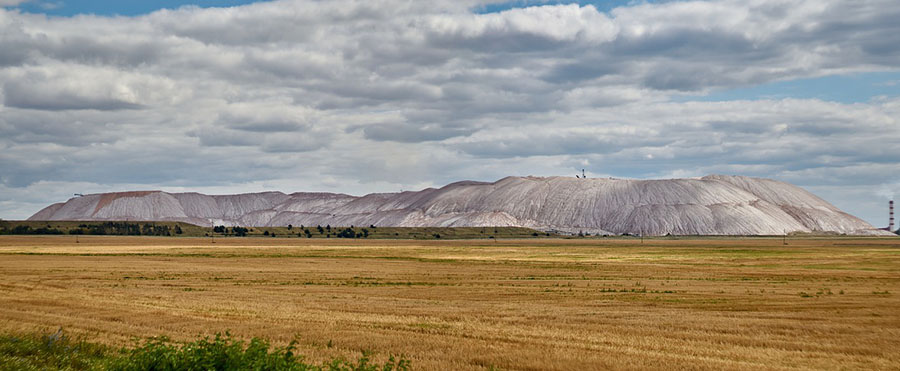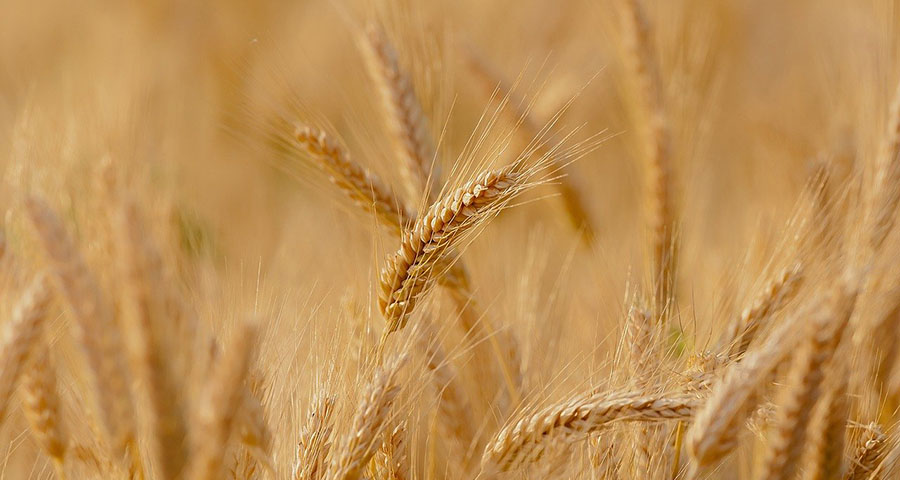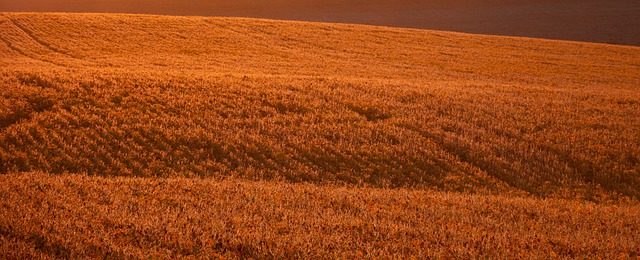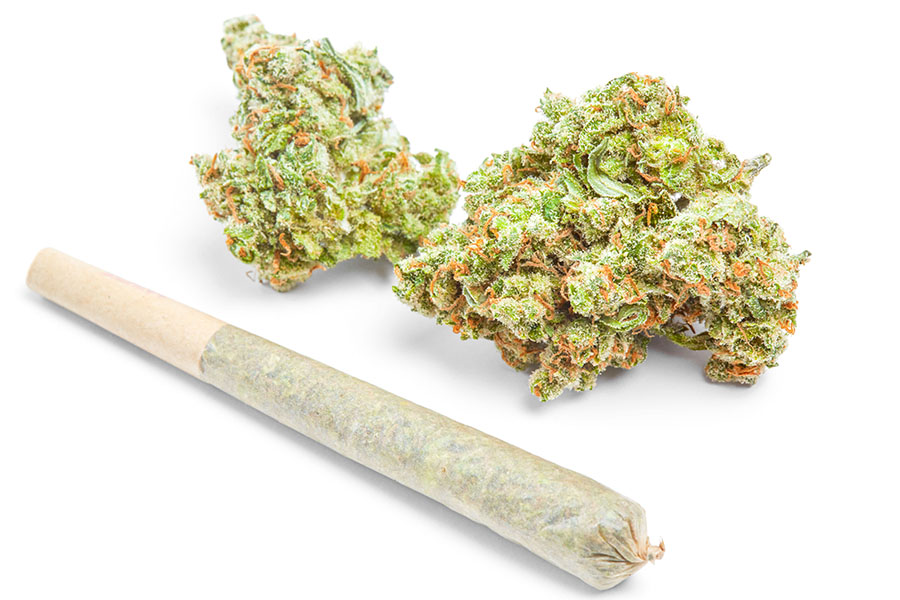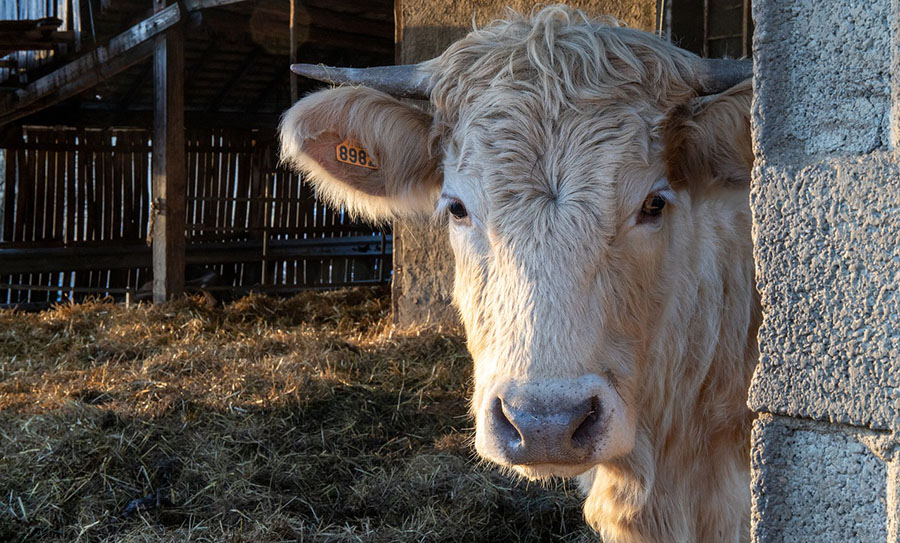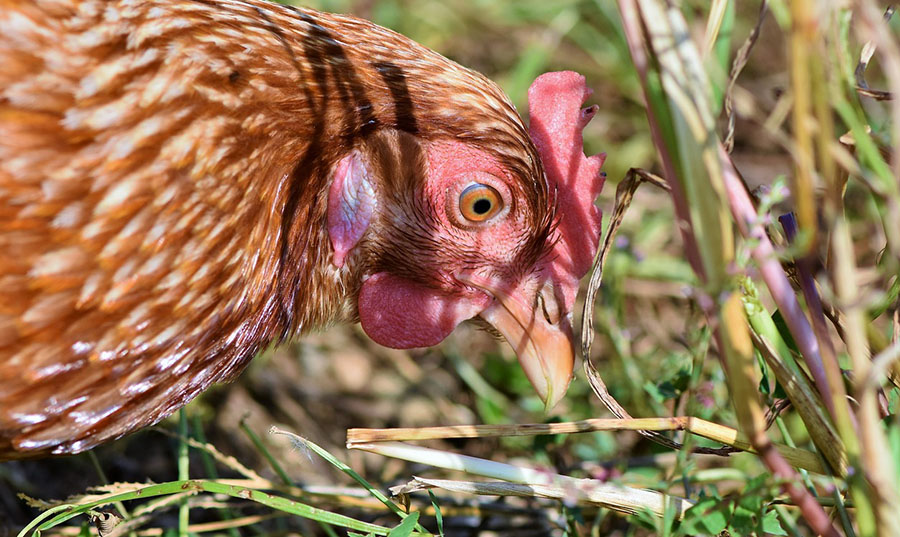TICKERS: AAA; ALLRF, , SDFG, KRN, POT, RVD, NPK; AMHPF,
What's Next for Potash Producers: Jaret Anderson
Interview
Source: Zig Lambo of The Energy Report (2/9/12)
 Major potash stocks are beginning to raise eyebrows with impressive profit margins. But as this developing market expands, industry giants will face competition from greenfield and brownfield projects in the works. In this exclusive interview with The Energy Report, Mackie Research Capital Analyst Jaret Anderson debriefs us on some fascinating development stories that are poised to change where and how the most successful potash producers operate.
Major potash stocks are beginning to raise eyebrows with impressive profit margins. But as this developing market expands, industry giants will face competition from greenfield and brownfield projects in the works. In this exclusive interview with The Energy Report, Mackie Research Capital Analyst Jaret Anderson debriefs us on some fascinating development stories that are poised to change where and how the most successful potash producers operate.
Jaret Anderson: The tail end of 2011 saw a period of weak demand for Canadian potash. Fourth-quarter shipments at Potash Corp. (POT:TSX; POT:NYSE) dropped by about one-third year over year (YOY). General concern over the economy gave dealers an incentive to avoid stocking up their warehouses, resulting in soft shipments, higher unit operating costs and quarterly earnings below expectations. However, Potash Corp. posted a 68% gross margin in its potash segment during the quarter, making it one of the most profitable publicly-traded businesses of this scale.
Meanwhile, Brazil overtook India as the top global importer of potash in 2011, with imports of about 7.5 million tons (Mt) KCl. This figure was up 21% YOY, drawing even more attention to the country's chronic domestic potash deficit.
TER: What should fertilizer producers expect in the next few years?
JA: We're going to see bullish prospects for fertilizer producers over the next 12–18 months. Demand for fertilizer products is likely to remain soft in Q112, but as the spring planting season in the northern hemisphere kicks into gear in Q212, we expect markets to tighten.
TER: You put out a report last December showing a fairly large global number of both new and expansion projects in the works. How will these projects affect the supply and demand equation over the next five years?
JA: We actively track 19 different brownfield expansion projects and 26 different greenfield projects around the world, totaling ~67 Mt of planned capacity. If all of those projects were built on the timelines put forward by their respective owners, we would see a massive glut of capacity in the back half of this decade. The reality, though, is that only the best of these projects are going to be built, and those are likely to experience significant delays compared to their projected timelines. Potash demand in 2011 was about 55 Mt. If we assume demand growth of 3%/year for the remainder of the decade, that implies we'll need an incremental 17 Mt of supply by 2020 in order to maintain operating rates at 2011 levels. That is pretty close to the 20 Mt of brownfield projects currently on the drawing board. Any demand growth beyond this 3% level or further delays of brownfield projects would tighten markets further.
TER: You don't expect an oversupply or downward price pressure?
JA: In any commodity, things don't go up forever. At some point, the supply-demand balance is going to shift in favor of the buyers. The next several years however, look very positive for potash producers.
TER: Saskatchewan is the potash capital of North America, and although it's a major supplier to other parts of the world, the North American market is relatively mature. What North American potash companies are still attractive buys at this time?
JA: In my view, the most attractive greenfield potash project in Saskatchewan is Milestone, which is being developed by a company called Western Potash Corp. (WPX:TSX.V). The company has a very large in situ resource of about 3.5 billion tons (Bt) KCl and has the highest grade of any existing solution-potash mine in Saskatchewan. Milestone looks very similar to the former Legacy project of Potash One Inc., which was purchased by K+S Potash Canada (SDFG:FKFT) in November 2010 for $434 million (M). At a market cap of $200M today, we believe Western Potash represents the lowest-risk greenfield potash company in the world, with a very attractive valuation.
TER: Another Saskatchewan company you've discussed in the past is Karnalyte Resources Inc. (KRN:TSX). It is developing a relatively low-cost, solution-mining project. What are your thoughts on the company's risk-reward ratio?
JA: Karnalyte is focused on a different type of project that will seek to extract carnallite mineralization at its Wynyard property. While its carnallite mineralization is only about half the grade of a project like Milestone, Karnalyte's engineers have designed a plant that can be built in stages, which offers some advantages in terms of capital expenditures. Karnalyte's shares suffered a significant decline in December after the company pulled a $115M financing. We upgraded the shares from "Hold" to "Buy" during December and believe that below $10/share, the company represents good value. However, it may be difficult to see performance for Karnalyte until it successfully raises capital to begin construction at its Wynyard project in the spring.
TER: Are its prospects reasonable for the company as long as the market holds up?
JA: Its shares now represent good value. That said, I believe Western has a more attractive valuation and project than Karnalyte. But there is a difference between a good project and a good stock. Because Karnalyte has taken a large hit of late, it has some decent upside, especially below $10/share.
TER: You recently visited Brazil to get a little better picture of the country's fertilizer business. That's a very large, growing market. Tell us what you learned.
JA: Each time I visit Brazil, I come away with more anecdotes that convince me of the need to find ways to invest in Brazil's agricultural future. Brazil has over 400 million hectares of arable land, but uses less than 15% of it today for agricultural purposes. It is the largest global exporter of beef, poultry, sugar, coffee and orange juice, and that production should grow for many decades. The problem is that its Cerrado region is generally nutrient-poor and requires significant quantities of fertilizer. Brazil has only one operating potash mine and imports more than 90% of the potash it consumes. In 2011, Brazil was the world's largest importer of potash, at about 7.5 Mt. The Brazilian government has set a goal of becoming fertilizer independent by the end of this decade and we believe investors should be looking for ways to gain exposure to Brazilian agriculture and fertilizer markets.
To that end, two companies we've focused on are Verde Potash (NPK:TSX.V) and Rio Verde Minerals Development Corp. (RVD:TSX). Verde Potash controls the Cerrado Verde project in Minas Gerais state, which contains a large, at-surface deposit of potash-rich verdete slate. The company has developed and patented a process to convert verdete slate into KCl, the same standardized product that's produced in Saskatchewan and Russia today. This is known as the Cambridge process. It's very exciting, as it could allow for large-scale potash production in Brazil from an open-pit operation—something that hasn't been done anywhere in the world.
Verde Potash recently published a Preliminary Economic Analysis that indicated an operating cost of US$274/t during the early years of production, ramping up to $291/t over the 30 year life of mine as the stripping ratio increases. That would give Verde Potash the lowest delivered cash costs to Brazil of any large-scale competitor globally. The potash producers in Canada and Russia have lower operating costs, but face very large transportation costs to deliver product to farmers in Brazil. Capital costs for Verde Potash's project are estimated at US$800/t, which is about 25% below a typical greenfield solution mining project in Saskatchewan. Based on these attractive economics, we recently increased our 12-month target to $19.00/share. With the stock trading at about $7.00/share today, this is a very interesting story.
Another name we believe offers good exposure to Brazil is Rio Verde Minerals, which controls a land package near Aracaju in Northern Brazil. It is located adjacent to Taquari-Vassouras, the only operating potash mine in Brazil. Rio Verde is still at an early stage of development, having completed drilling on its first drill hole in November. We visited the site a couple of months ago and inspected the core. We await assay results from that hole. Rio Verde plans to drill three holes at its Sergipe potash property and to publish an NI 43-101 resource during Q212. Given the strong outlook for good potash grades on the property and the company's ideal location in Brazil, with nearby access to a port, roads, power and natural gas, Rio Verde looks to us to offer excellent risk-reward at current levels. Based on our target of $1.30/share, Rio Verde offers more upside to our target than any other company in our coverage universe.
TER: Can you elaborate on the Cambridge process you mentioned?
JA: In December 2010, Verde announced that it had patented a process to convert its verdete slate into KCl. This process was developed by Dr. Derek Fray at Cambridge University in the United Kingdom. This process was tested and optimized by Hazen Research in Denver, CO, and by FLSmidth in Allentown, PA, and SRK Consulting, which resulted in the publication of a Preliminary Economic Assesment in late January. We visited FLSmidth's facilities in Pennsylvania last week and observed the process in operation. The process is relatively simple and bears many similarities to the cement production process. It employs a rotary kiln, like cement, but uses different inputs, namely Verde Potash's verdete slate rock, limestone and salt. The Verde Potash KCL production process takes place at lower temperatures than that of cement, about 900C vs. cement at about 1,450C.
TER: Do you expect the Cambridge process to work on a commercial scale?
JA: It's moved from a bench scale at a university to a pilot plant. To move to a commercial scale is another jump. Staff at FLSmidth and SRK have indicated to us that they typically see fewer problems with commercial scale facilities than they do with pilot plants. Every indication we have points to the commercial scale kiln as being well within the technical ability and experience of the teams at FLSmidth and SRK.
TER: There's also been some development on the African continent, and a couple of Canadian juniors are working on projects there that are projected to go online in about five years. How are they progressing?
JA: Allana Potash Corp. (AAA:TSX; ALLRF:OTCQX) and Ethiopian Potash Corp (FED:TSX.V; FED.WT:TSX.V) are both working to develop greenfield potash projects in the Danakil depression in Northern Ethiopia. Allana is the much better capitalized of the two companies. It has published a large NI 43-101 resource based on its successful drill program over the last couple of years. The projects in Ethiopia are interesting in that the high year-round temperatures in the Danakil may allow for solar evaporation, thereby materially lowering energy costs in the solution-mining process. Ethiopia is also located relatively close to China and India, two important potash consumers.
Ethiopian projects face a major challenge, however, in that the logistics of moving thousands of tons of potash per day from the project site to the port at Djibouti some 600 kilometers (km) away over roads of varying quality may be a significant hurdle. We believe the transportation costs will end up being materially higher than current estimates.
Both Allana and Ethiopian Potash have seen their share prices languish over recent months and are both near 52-week lows. We believe both stocks have room to move up as the projects are derisked and as Allana moves toward a feasibility study in August of this year. While Ethiopian Potash has more leverage to positive developments given its smaller enterprise value, it is a much riskier investment given its very low cash levels. Allana, on the other hand, has more than $65M in cash on its balance sheet, providing it with a lot of time and resources to derisk its project and make it more attractive to potential suitors.
TER: Will Allana rely on a rail link to be built in order to get its product to market?
JA: There are plans in Ethiopia to build a rail network in the country, and that rail network is planned to approach Allana's project site. We've met with the minister of transportation in Ethiopia on this topic. That project is probably a number of years away from completion, and for at least the first several years of production, Allana is going to need to find a way to transport its product by road via truck. You can't assume the rail network is going to be ready in the next few years, in our view.
TER: What effect will trucking the material have on the project economics?
JA: Trucking will be much less economic than a rail network. Allana has published its own cost estimates for transporting the product from its project site to the port at Djibouti. We find its estimate of $12/t to be very low. We see a number closer to $50/t, based on the figures we've seen at other operations in existence today, such as those in Saskatchewan.
TER: Do you have any other interesting stories that our readers might find useful?
JA: The potash industry today is generating very high cash flow and strong returns on capital for incumbent producers. Potash Corp. generated a gross margin in its potash business last year of 68%. Apple Computer, by comparison, posted a gross margin of 41% in its fiscal 2011. The levels of free cash flow generated by this business and the strong secular trends in agriculture are going to attract capital and will ultimately lead to new greenfield production. With so many companies chasing so few quality projects though, we would caution investors to think carefully about the merits of each individual project. The size and grade of the deposit, the infrastructure in place, the proximity to major potash-consuming countries and the geopolitical risk are all critical drivers of value.
TER: Do you see any further consolidation in this business at this point? Or is it still too early?
JA: We've had a lot of consolidation in this business. The successful business strategy that greenfield potash companies have employed in the past has been to identify a good project; then derisk it by defining the resource through engineering and feasibility studies to make it more attractive to well-capitalized companies. A number of greenfield potash companies have had success with that strategy by ultimately selling to large mining companies like BHP Billiton Ltd. (BHP:NYSE; BHPLF:OTCPK), Vale S.A. (VALE:NYSE) and Rio Tinto (RIO:NYSE; RIO:ASX). I think this process makes sense and is going to continue.
TER: What are your top picks at this point?
JA: Our top picks in the sector for 2012 are Verde Potash and Rio Verde Minerals. Both companies offer good leverage to the Brazilian fertilizer market and have the potential to generate meaningful returns to equity investors. By their nature, development-stage resource companies involve much more risk than an operating company. We believe, though, that 2012 is likely to see very strong results for the greenfield companies with the best-quality assets, in the right locations, with attractive valuations. In our view, Verde Potash and Rio Verde check all of those boxes.
TER: Thank you for your time.
JA: Thank you.
Jaret Anderson is a research analyst covering agriculture and fertilizer at Mackie Research Capital. Anderson has 13 years of experience in the investment industry and was rated #1 for earnings estimate accuracy by Starmine in 2006 and #2 for the quality of his reports in 2005. Prior to joining the firm in July 2011 Anderson worked at UBS Securities Canada where he covered Canadian paper and forest companies, as well as chemical and fertilizer industries. Most recently Anderson covered Canadian fertilizer and chemical companies for Salman Partners. He received a Bachelor of Commerce, with honours (Finance) from the University of British Columbia, and was awarded the CFA designation in 2000.
Want to read more exclusive Energy Report interviews like this? Sign up for our free e-newsletter, and you'll learn when new articles have been published. To see a list of recent interviews with industry analysts and commentators, visit our Exclusive Interviews page.
DISCLOSURE:
1) Zig Lambo of The Energy Report conducted this interview. He personally and/or his family own shares of the following companies mentioned in this interview: None.
2) The following companies mentioned in the interview are sponsors of The Energy Report: Allana Potash Corp., Karnalyte Resources Inc. and Verde Potash. Streetwise Reports does not accept stock in exchange for services.
3) Jaret Anderson: I personally and/or my family own shares of the following companies mentioned in this interview: Verde Potash Plc and Rio Verde Minerals Development Corp. I personally and/or my family am paid by the following companies mentioned in this interview: None. I was not paid by Streetwise for this interview.



